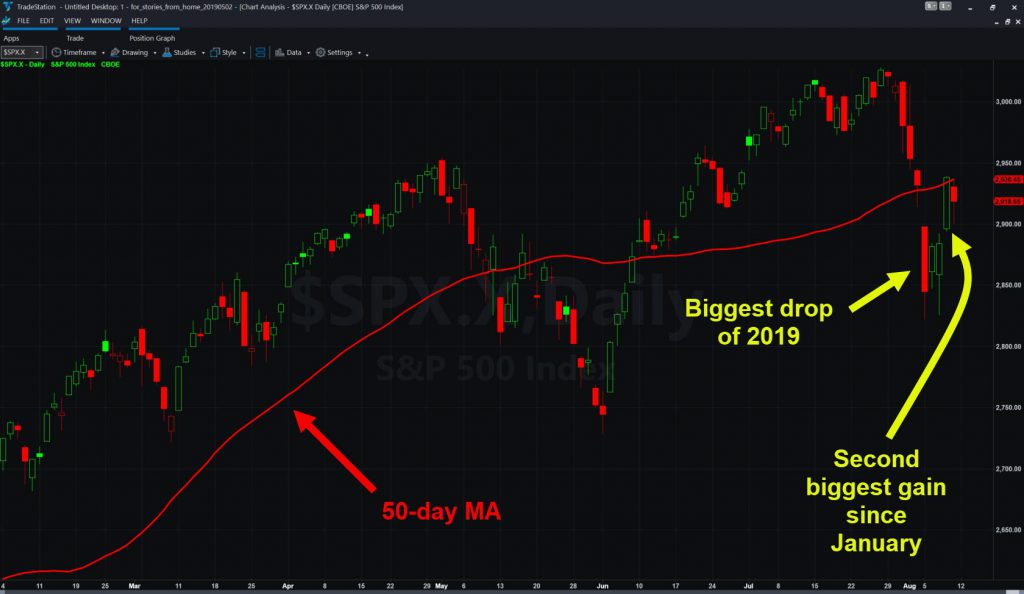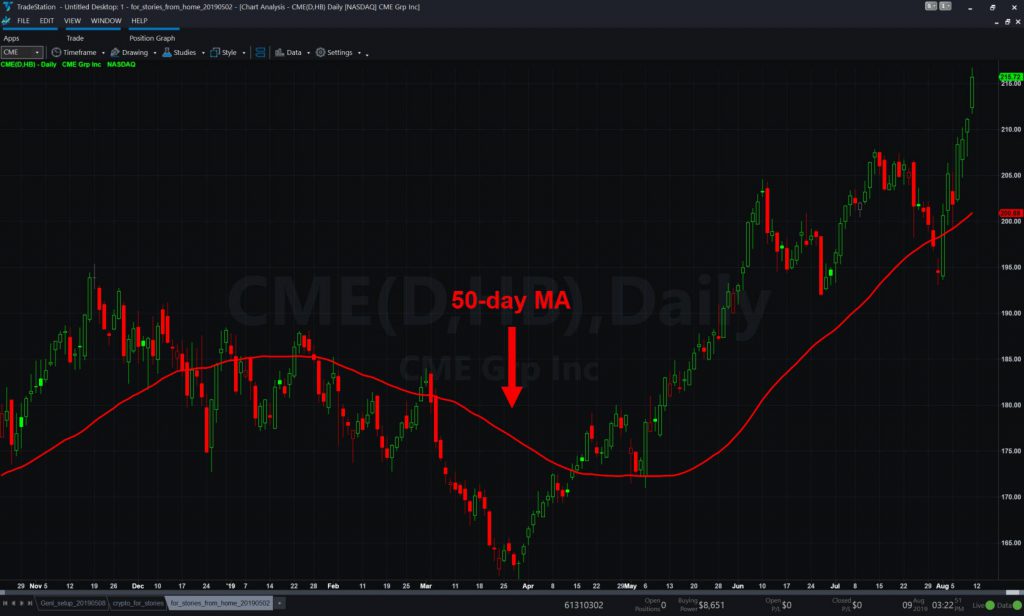August is off to a weak start as attention shifts from earnings and rate cuts to fears about trade.
The S&P 500 just had a crazy week, with the biggest one-day drop of 2019 and the second-biggest one-day gain since January. By the time the dust settled, the index had fallen 0.5 percent between Friday, August 2, and Friday, August 9.
Things started on a bearish foot Monday as China let its currency fall to a new 11-year low against the U.S. dollar. Combined with an embargo on U.S. grain exports, investors concluded Beijing was retaliating against President Trump’s Aug. 1 tariff move. There was more drama on Friday as the White House appeared to take a hard line against Chinese tech giant Huawei.

Economic news was mixed. Jobless claims still showed one of the healthiest labor markets in history but a service-sector report fell more than expected. India, Thailand and New Zealand also kept the downward pressure on global interest rates.
Risk-Off Sentiment Continues
“Risk-off” sectors like gold miners and utilities were the best performers last week. Energy stocks and financials, which generally benefit from stronger economic growth, led to the downside.
Three smaller niches bucked the bearish trend:
- Solar energy continued its stealth rally amid strong installations.
- Financial exchanges like CME (CME) and Intercontintal Exchange (ICE) pushed to new highs. Unlike banks, a flat yield curve doesn’t hurt them.
- Medical-device companies like Medtronic (MDT), Zimmer Biomet (ZBH), Edward Lifesciences (EW), Stryker (SYK) and Boston Scientific (BSX) remained at or near 52-week highs. Are these immune from the political risk and price pressures hurting HMOs and Big Pharma?
Advanced Micro Devices (AMD) was the S&P 500’s biggest gainer last week. The semiconductor company surged 16 percent after Alphabet (GOOGL) and Twitter (TWTR) embraced its new Epyc data-center chips. Aerospace company TransDigm (TDG) followed with a similar gain after beating estimates and raising guidance. It turns out a recent acquisition is driving profitability.

But then you have DXC Technology (DXC) and Nektar Therapeutics (NKTR). DXC, an IT company pieced together from Hewlett-Packard and Computer Sciences, cut sales guidance as its legacy businesses come under pressure. NKTR reported manufacturing problems. Both stocks lost about one-third of their value.
Summer Doldrums Ahead
The event calendar gets increasingly quiet as we move deeper into August. Nothing important is scheduled for today. Tomorrow’s main item is consumer price inflation.
Wednesday features oil inventories and earnings from technology giant Cisco Systems (CSCO).
Thursday’s the busiest session. Economic reports include retail sales, weekly jobless claims and industrial production. Wal-Mart Stores (WMT) reports earnings in the premarket. Semiconductor stocks Nvidia (NVDA) and Applied Materials (AMAT) follow in the afternoon.
Friday brings housing starts, consumer sentiment and quarterly numbers from Deere (DE).


























